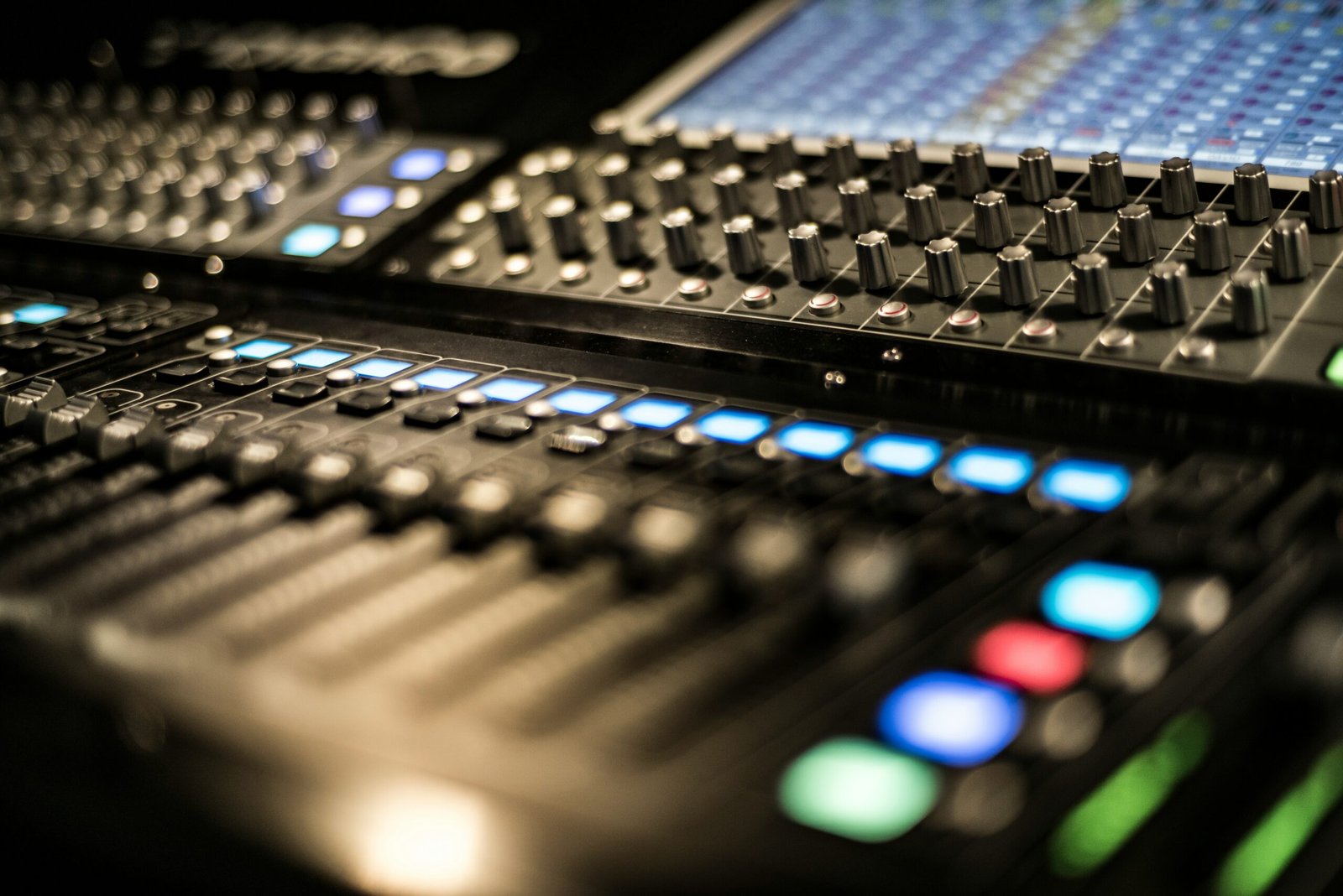Introduction to Music and the Brain
Music is an integral part of human culture, serving as a universal language that transcends geographical and linguistic barriers. Found in every known civilization, music is not merely entertainment; it plays a vital role in social cohesion, storytelling, and self-expression. From lullabies that soothe infants to anthems that fuel social movements, the significance of music is profound, and its impact on individuals and societies is well-documented.
The relationship between music and the brain is particularly fascinating. Neuroscience research has shown that various areas of the brain activate when individuals listen to or perform music, highlighting the complexity of this interaction. For instance, the auditory cortex processes sounds, while regions tied to emotions, such as the amygdala and hippocampus, respond to the emotional content of music. This complex connectivity illustrates how music can evoke memories, trigger emotions, and even alter one’s mood.
Moreover, music serves as a powerful form of communication, capable of expressing feelings that words often cannot convey. Different musical styles can elicit a wide range of emotions, from joy to sadness, excitement to nostalgia. This ability to communicate and resonate emotionally with listeners is what makes music universally appealing and significant across cultures.
Countless studies have explored how our brains process different musical elements, such as melody, harmony, and rhythm. These elements not only create pleasurable experiences but can also engage cognitive functions, enhance learning, and even promote healing. The sheer diversity of musical genres and their unique characteristics offer a rich avenue for understanding the intricacies of human cognition and emotion, making the study of music and the brain a vibrant field of inquiry.
The Science Behind Music Processing
Music processing in the human brain is a complex phenomenon that involves multiple neurological mechanisms. Initially, sound waves enter the ear and are converted into electrical signals by tiny hair cells in the cochlea. These electrical signals travel through the auditory nerve to the brain, where they are first processed in the auditory cortex. This region is primarily responsible for decoding basic aspects of sound, including pitch, volume, and rhythm. The auditory cortex allows listeners to discern different musical notes and recognize patterns, forming the foundation for musical perception.
Beyond the auditory cortex, various other areas of the brain contribute to how music is experienced. The prefrontal cortex, which governs higher cognitive functions such as decision-making and emotional responses, becomes engaged during music processing. This area helps individuals evaluate and appreciate music, determining its emotional impact and cultural significance. Furthermore, the limbic system, which plays a crucial role in emotional regulation, is activated when music elicits feelings of joy, nostalgia, or sadness. The interplay between these brain regions demonstrates how music transcends mere auditory input to invoke complex emotional and cognitive responses.
Another essential aspect of music processing is brain connectivity and plasticity. Research indicates that active engagement in music enhances connectivity between various brain networks, allowing for improved communication between regions involved in auditory perception, memory, and emotion. This interconnectedness suggests that regular music exposure or practice can lead to long-lasting changes in brain function, bolstering cognitive skills and emotional resilience. Furthermore, the brain’s plastic nature allows it to adapt to new auditory information, paving the way for individuals to better appreciate diverse musical styles and genres over time. The integration of these neurological processes underscores the remarkable capabilities of the human brain in interpreting and enjoying music.
Emotional Responses to Different Genres
Music is a profound channel for emotional expression, and different genres can elicit distinct feelings and moods among listeners. Research has shown that genres such as classical, rock, jazz, and pop each carry unique emotional connotations that influence how individuals respond. Understanding these emotional responses can enhance our appreciation of music and its power over our feelings.
Classical music, often associated with a vast range of emotions, can evoke feelings of serenity, nostalgia, or even melancholy. Its complex structures and harmonies foster a contemplative atmosphere, making it popular for relaxation and focus. Works by composers like Beethoven and Bach often inspire a sense of majesty and elegance, allowing listeners to explore deep emotional landscapes. The slower tempo and orchestral arrangements encourage introspection, leading to a reflective emotional state.
Conversely, rock music tends to stimulate more energetic emotional responses. Characterized by its strong rhythms and often rebellious themes, this genre can evoke feelings of excitement, motivation, or liberation. Bands like Queen and Nirvana have utilized powerful lyrics and dynamic instrumentation to create anthems that resonate with listeners, often promoting a sense of empowerment and collective identity.
Jazz, known for its improvisational style, connects listeners to a range of emotions, from joy to sorrow. The genre’s complex rhythms and melodies create a dynamic emotional experience, often leading to feelings of spontaneity and freedom. Its rich history in cultural movements also adds layers of emotional depth, allowing individuals to connect personally to the music.
Pop music, characterized by its catchy melodies and relatable lyrics, often appeals to a broad audience. This genre frequently evokes feelings of happiness and nostalgia, drawing on themes of love, heartbreak, and celebration. The familiarity of pop songs can trigger memories and emotions associated with particular life experiences, thus personalizing the listener’s journey through music.
Ultimately, personal preference plays a vital role in how individuals respond emotionally to music. Each person’s life experiences, cultural background, and even mood can significantly influence their reactions to different genres. This indicates that while specific genres may commonly evoke certain feelings, the emotional outcome can vary greatly among listeners. Understanding these connections offers insights into the complex interplay between music, emotions, and personal preference.
Music and Memory: A Strong Connection
The intricate relationship between music and memory is a subject that has garnered significant attention in both scientific and therapeutic fields. Research indicates that familiar songs can evoke vivid recollections and intense emotions, often transporting individuals back to specific moments in their lives. This phenomenon occurs because music engages various areas of the brain, including those responsible for memory processing and emotional responses. As such, hearing a particular melody may trigger memories of past events, enhancing overall emotional well-being.
Moreover, the use of music therapy has emerged as a valuable tool in the treatment of patients suffering from dementia or Alzheimer’s disease. Numerous studies have documented the efficacy of music therapy in facilitating memory recall among individuals experiencing cognitive decline. By engaging patients with familiar tunes, therapists can promote connections with personal histories, thereby providing a sense of comfort and continuity. This can lead to improvements in mood, reduced anxiety, and enhanced cognitive function, even momentarily.
Research has shown that music activates distinct neural pathways in the brain, often bypassing damaged areas responsible for memory formation. In dementia patients, for instance, certain songs linked to significant life events can elicit memory recall, even in individuals who may struggle with conversation or recognition. The effectiveness of these interventions not only reinforces the connection between music and memory but also highlights the potential of music as a therapeutic avenue for those affected by memory-related disorders.
In conclusion, the profound influence of music on memory illustrates its potential as a healing agent, underscoring its relevance in therapeutic settings. As studies continue to explore the neurological underpinnings of this connection, the integration of music therapy into conventional treatment plans remains a promising method for enhancing the quality of life for individuals with cognitive impairments.
The Therapeutic Effects of Music
Music has long been recognized not just for its entertainment value but also for its substantial therapeutic potential. In recent years, research has increasingly highlighted its applications in mental health treatment. Music therapy, which involves the use of music interventions to achieve specific therapeutic goals, has been effectively utilized in various settings, from hospitals to private practices. Numerous studies have demonstrated that engaging with music can significantly reduce anxiety levels in patients, promote relaxation, and even improve mood disorders. For individuals dealing with depression or anxiety, listening to or creating music can serve as a powerful coping mechanism, offering an emotional outlet that can lead to improved mental well-being.
Furthermore, music’s impact extends beyond mental health by playing a crucial role in pain management. Evidence suggests that patients who listen to music during medical procedures experience lower levels of pain and reduced need for medication. The soothing effects of music can distract from discomfort and facilitate relaxation, making it a valuable tool in clinical settings. In rehabilitation programs, music therapy has been shown to aid recovery processes, enhancing not only physical rehabilitation but also cognitive functions. The rhythmic patterns and melodies can stimulate brain regions involved in movement and memory, fostering improvements that contribute to overall recovery.
Research conducted by institutions worldwide has provided academic backing for these assertions, reinforcing the significance of music in therapeutic practices. For instance, a meta-analysis involving various studies on music therapy has confirmed its effectiveness in managing emotional and physical challenges, emphasizing a clear correlation between music engagement and enhanced health outcomes. Such findings make it evident that music is not merely a source of enjoyment; it is a pivotal component in the holistic treatment of various health conditions, thereby promoting a more profound understanding of its potential as a therapeutic resource.
Brainwave Synchronization and Music
Brainwave synchronization is a fascinating phenomenon that occurs when external stimuli, such as music, influence the electrical activity of the brain. Our brains typically operate at various frequencies, characterized as delta, theta, alpha, beta, and gamma waves. Each of these frequencies corresponds to different mental states, ranging from deep sleep to heightened alertness. Music, with its rich tapestry of rhythms and melodies, has the potential to induce specific brainwave patterns, thereby affecting mood, cognition, and overall mental well-being.
One particularly intriguing aspect of this relationship is the concept of binaural beats. When two slightly different frequencies are presented to each ear, the brain perceives a third tone, which is the difference between the two frequencies. This auditory illusion can lead to a synchronization of brainwaves to match the frequency of the perceived beat, promoting various cognitive states. For example, binaural beats in the theta range are often associated with relaxation and meditation, while those in the beta range can enhance alertness and concentration.
The tempo of music also plays a crucial role in its impact on brainwave activity. Fast-paced music tends to energize listeners, stimulating beta waves, which are linked to cognitive engagement and a heightened state of awareness. Conversely, slower tempos can induce alpha waves, conducive to relaxation, creativity, and a calmer mental state. Research suggests that rhythmic music can even enhance cognitive functions such as memory and learning, making it a valuable tool for students and professionals alike.
Furthermore, the impact of rhythm on brain function cannot be overlooked. Various studies have shown that engaging with rhythmic music can improve coordination and enhance the processing of auditory information. This synchronization between music and brain activity illustrates the profound influence that sound can have on our cognitive states and mental frameworks.
Cultural and Social Influences on Music Perception
The perception of music is inherently intertwined with cultural backgrounds and social environments, significantly shaping our musical preferences. From early childhood experiences to communal rituals, music is a vital aspect of cultural identity that informs how individuals engage with various genres. The ways in which music is incorporated into daily life, celebrations, and significant events create a framework through which individuals interpret and connect with sounds.
For example, societies with rich traditions of oral storytelling may develop a preference for music that emphasizes narrative structures, while cultures emphasizing rhythmic dance might gravitate towards beats that encourage movement. Furthermore, social influences, such as peer groups and community gatherings, play a critical role in shaping one’s musical tastes. Social environments can introduce listeners to different musical genres, forging connections that may significantly alter perceptions and preferences over time.
Genres that resonate emotionally within one culture can be perceived entirely differently in another. Take hip-hop, for instance; it may be celebrated as a platform for social justice and self-expression in some communities, whereas in others, it may not evoke the same emotional response due to disparate cultural significances. Additionally, the proliferation of global media has fostered a hybridization of musical styles, leading to the emergence of new genres that encapsulate diverse cultural influences.
This cross-pollination of musical styles highlights the need for greater understanding of the social contexts in which music is experienced. As individuals encounter music from various backgrounds, their emotional responses are nuanced by cultural conditioning and social norms. Music perception is, therefore, a dynamic interplay of personal experiences and collective cultural influences, ultimately enriching the way we understand, enjoy, and connect with music across different societies.
The Future of Music Research
As neuroscience continues to evolve, the future of music research promises to unveil significant advancements that will deepen our understanding of how the brain processes music. Innovations in technology are expected to play a crucial role in this endeavor. For instance, the development of neuroimaging techniques, such as functional magnetic resonance imaging (fMRI) and electroencephalography (EEG), will enable researchers to observe real-time brain activity while participants engage with various musical stimuli. This can provide invaluable insights into the neural mechanisms that underpin emotional responses triggered by music.
Emerging fields, particularly neuroaesthetics, will likely intersect with music research to explore the aesthetic aspects of music and its cognitive implications. Neuroaesthetics examines the neurological basis of aesthetic experiences, allowing researchers to investigate how music’s emotional and aesthetic qualities affect brain function and behavior. This interdisciplinary approach holds the potential to reveal the profound connections between music, emotion, and cognition, highlighting how our sensory experiences shape and are shaped by neural processes.
Furthermore, advancements in artificial intelligence and machine learning models can be employed to analyze large datasets of musical compositions and listener responses. Such analyses may uncover patterns in how different genres and styles of music influence brain activity across various demographics. This data-centric approach to research could lead to personalized music therapy interventions, optimizing emotional and psychological healing through tailored musical selections.
The implications of such advancements are significant; they can inform therapeutic practices, enhance educational methodologies, and even contribute to the development of technology designed to improve mental health. As the fields of neuroscience and music research continue to converge, we stand on the brink of a deeper understanding of music’s profound influence on the human brain, suggesting a future rich with discovery and innovation in the intersection of these two dynamic areas.
Conclusion: The Universality of Music’s Impact
Throughout this exploration of how our brains process music, it becomes clear that this art form serves as more than just entertainment; it emerges as a profound language that transcends cultural and linguistic barriers. Music engages various cognitive processes, activating multiple brain regions that contribute to its complexity and the depth of emotional responses it elicits. As we have seen, the interplay of rhythm, melody, and harmony not only stimulates the auditory pathways but also connects to memories, emotions, and even physical sensations, reinforcing music’s unique ability to resonate within us all.
The versatility of music in evoking feelings underscores its significance in human experience. Whether through the joyous strains of a celebratory anthem or the haunting notes of a melancholic ballad, music has the power to evoke emotions that words alone may struggle to express. This emotional engagement can encourage a range of feelings such as joy, nostalgia, and empathy, reminding us of our shared humanity, regardless of geographic or cultural differences. This capacity for emotional resonance further suggests that music acts as a universal connector, fostering relationships and enhancing communication among individuals and communities.
Moreover, research increasingly supports the view of music as a tool for promoting well-being. The therapeutic effects of music have been established in various contexts, including mental health treatment and cognitive rehabilitation. The ability of music to improve mood and reduce stress highlights its role as a valuable ally in navigating life’s challenges. As we reflect on our personal connections to music, it invites us to appreciate its profound impact in our lives, reinforcing that music is not merely an art form but a vital component of the human experience. This universal language continues to shape our identities, offering solace and joy in an ever-changing world.



